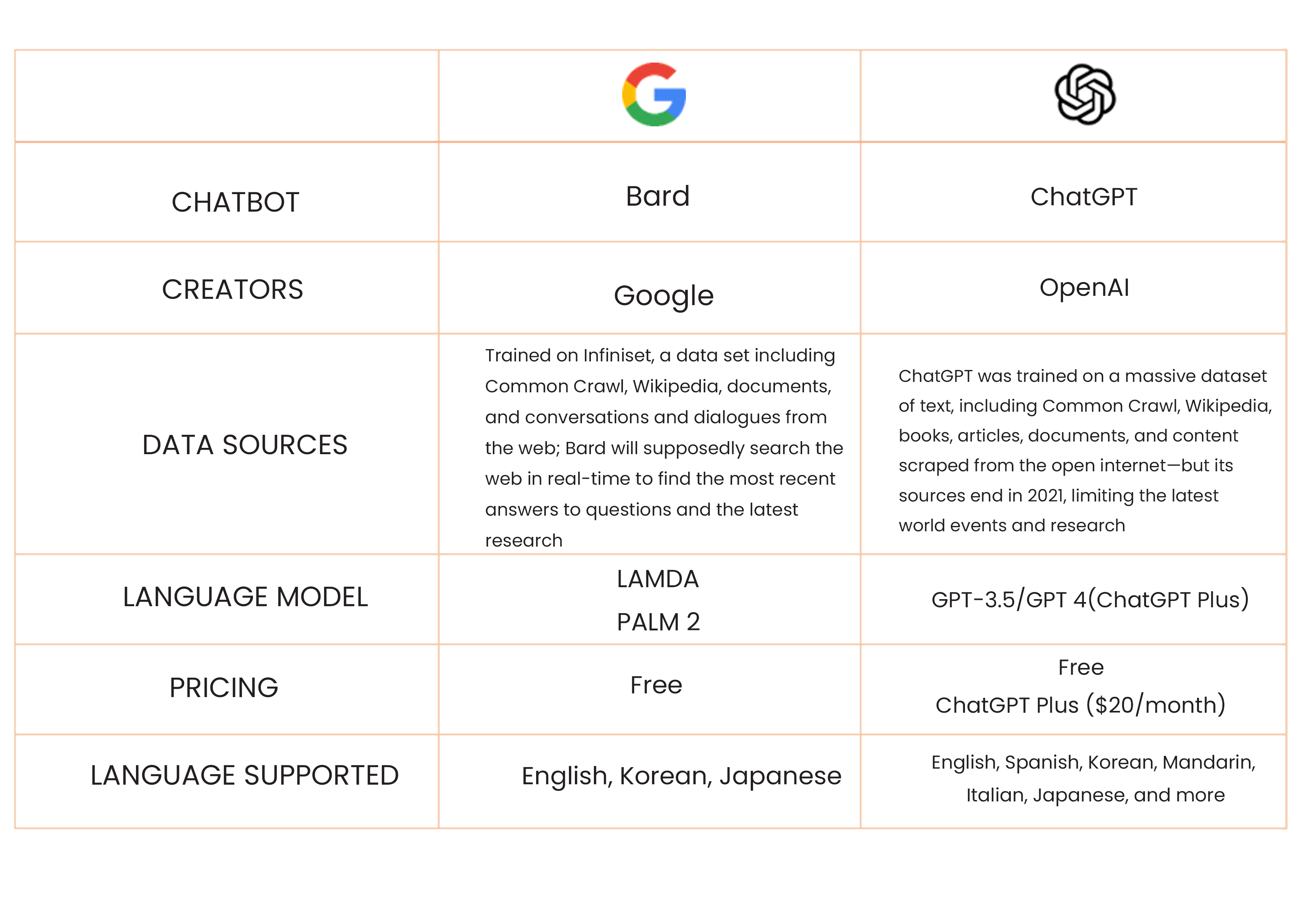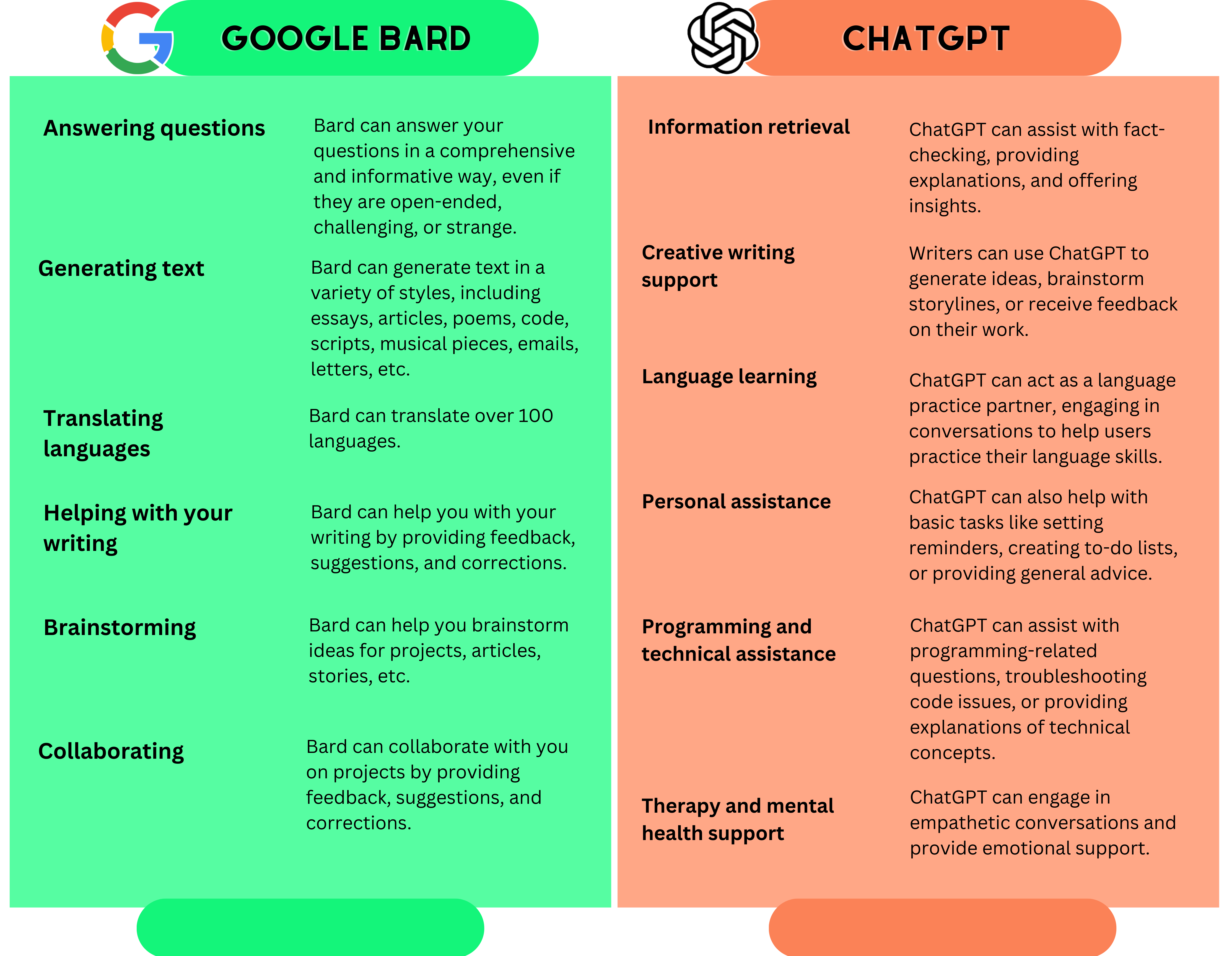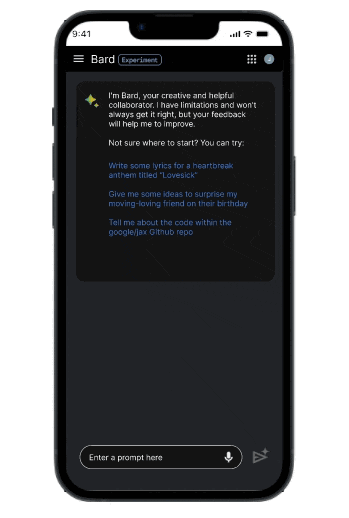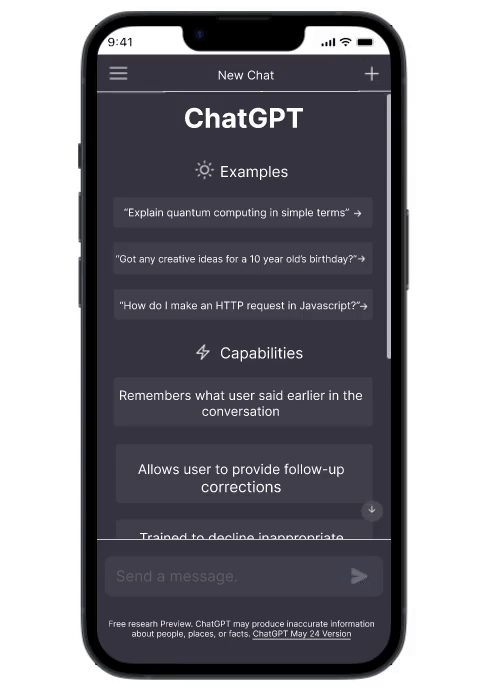Have you recently encountered any unfamiliar terms or subjects spoken by those around you while traveling or commuting, at school, or at work? According to Google Trends, as of the third week of May 2023, this issue had acquired 100% of the global search term.
As a user do you want to know a tool that will help you to search online that will consistently deliver you the best results for your search queries?
Without further ado, this is the newest AI chatbots, Google’s Bard and ChatGPT, which will simplify our lives and help us answer our inquiries promptly, are now one of the trendiest topics in technology. Discover more about these two AI chatbots and choose the one that will serve you best.
Basics: What is Google Bard and ChatGPT
What is Google Bard?
Google Bard is an AI chatbot driven by language models that uses natural language processing to converse with users. Initially, the Language Model For Dialogue Applications (LAMDA) was utilized to make it conversational, however, it was upgraded to Pathway Language Model 2 (PALM 2) Google’s next-generation language model. Through this large language model, Bard can deliver more extensive responses to inquiries than a standard Google search.
Instead of using keywords, Bard searches using conversational or natural language inquiries. In 180 countries, Bard is available to the public and offers content in three languages: US English, Japanese, and Korean.
What is ChatGPT?
ChatGPT is an AI chatbot created by OpenAI, a research organization devoted to advancing humankind. To respond to user inquiries, ChatGPT uses a learning technique known as the Generative Pre-Trained (GPT). With thorough training on a vast amount of information, including periodicals, online platforms, and social media posts, ChatGPT can produce language in a variety of formats and categories.
Comparison: ChatGPT VS Bard
The difference between Google Bard and ChatGPT
Although Google Bard and ChatGPT were both artificial intelligence models that used natural language processing to produce human-like responses, there was a substantial difference between the two. The models and the data sources they were trained on were the key distinctions between Bard and ChatGPT. Google Bard initially utilized LAMDA which it trained on a dataset called Infiniset. ChatGPT is utilized with GPT and trained on a massive dataset of text.
Here are some of their significant characteristics, along with more information about how they differ.

Google Bard vs ChatGPT: Features
Features of Google Bard
• Answers questions in a comprehensive and informative way: Bard can answer your questions in a comprehensive and informative way, even if they are open-ended, challenging, or strange.
• Generates text in a variety of styles: Bard can generate text in a variety of styles, including essays, articles, poems, code, scripts, musical pieces, emails, letters, etc.
• Translates languages: Bard can translate over 100 languages.
• Helps with your writing: Bard can help you with your writing by providing feedback, suggestions, and corrections.
• Brainstorms ideas: Bard can help you brainstorm ideas for projects, articles, stories, etc.
• Collaborate: Bard can collaborate with you on projects by providing feedback, suggestions, and corrections.
Google Bard is still under development, but it has the potential to be a powerful tool for a variety of tasks. It is available to the public through the Google AI Experiment Platform.
Here are some additional features that are currently in development:
• Multi-tasking: Bard will be able to handle multiple tasks at once, such as answering questions, generating text, and translating languages.
• Context awareness: Bard will be able to understand the context of your questions and requests, and will be able to provide more relevant and helpful responses.
• Personalization: Bard will be able to learn your preferences and style, and will be able to provide more personalized responses.
Features of ChatGPT
ChatGPT offers several features that enhance its functionality and improve the user experience. Some notable features of ChatGPT include:
• Conversational Interface: ChatGPT is designed to engage in interactive and dynamic conversations with users, mimicking a natural language exchange. Users can input messages or questions in plain text, and ChatGPT responds accordingly.
• Contextual Understanding: ChatGPT maintains context and remembers the conversation history. It can refer back to previous messages in the conversation, allowing for more coherent and context-aware responses. This feature enables users to have more fluid and meaningful interactions.
• Multi-turn Dialogue: ChatGPT supports multi-turn conversations, enabling users to have extended interactions rather than isolated queries. The model can retain information from earlier messages and incorporate it into subsequent responses, leading to more accurate and coherent conversations.
• Text Completion and Generation: ChatGPT is capable of completing text prompts provided by users. It can generate responses in natural language, providing relevant and context-specific information. This feature allows for a wide range of applications, from answering questions to creative writing assistance.
• Language Support: ChatGPT is proficient in multiple languages, including but not limited to English. It can understand and respond in various languages, broadening its accessibility and usability for users across different linguistic backgrounds.
• Personalization: ChatGPT allows users to customize the persona of the AI assistant. By specifying characteristics or traits, users can tailor the interaction style to their preferences. However, it’s important to note that ChatGPT’s responses are generated based on patterns from training data and do not reflect an actual individual’s personality.
• API Integration: ChatGPT can be integrated into applications and services through the OpenAI API, enabling developers to incorporate its conversational capabilities into their own platforms. This integration allows for the creation of chatbots, virtual assistants, and other interactive systems.
Google Bard vs ChatGPT: Purpose and Application

Purpose and Application of Google Bard
The purpose of Google Bard is to provide a more natural and conversational way to interact with the internet. It can be used for a variety of tasks, including:
Answering questions: Bard can answer your questions in a comprehensive and informative way, even if they are open-ended, challenging, or strange.
Generating text: Bard can generate text in a variety of styles, including essays, articles, poems, code, scripts, musical pieces, emails, letters, etc.
Translating languages: Bard can translate over 100 languages.
Helping with your writing: Bard can help you with your writing by providing feedback, suggestions, and corrections.
Brainstorming: Bard can help you brainstorm ideas for projects, articles, stories, etc.
Collaborating: Bard can collaborate with you on projects by providing feedback, suggestions, and corrections.
Purpose and Application of ChatGPT
The applications of ChatGPT are diverse and span across various domains. Some common uses include:
Information Retrieval: ChatGPT can assist with fact-checking, providing explanations, and offering insights.
Creative writing support: Writers can use ChatGPT to generate ideas, brainstorm storylines, or receive feedback on their work.
Language learning: ChatGPT can act as a language practice partner, engaging in conversations to help users practice their language skills.
Personal assistance: ChatGPT can also help with basic tasks like setting reminders, creating to-do lists, or providing general advice.
Programming and technical assistance: ChatGPT can assist with programming-related questions, troubleshooting code issues, or providing explanations of technical concepts.
Therapy and mental health support: ChatGPT can engage in empathetic conversations and provide emotional support.
Google Bard vs ChatGPT: Search Engine Function
Search engine integration is a key component in the creation of AI language models. It allows AI models to retrieve and utilize information from search engines to enhance their capabilities and provide more relevant and up-to-date responses to user queries. When it comes to search engine functionality, Google Bard and ChatGPT offer various functions.
Google Bard has access to a vast amount of data from the Google index, which it uses as a knowledge base to produce content that is search engine optimized. It creates relevant, search engine-friendly material. Although Google can also construct meta descriptions, it does not offer as much customization or control as ChatGPT.

Here is an illustration of Google Bard AI chatbot responding to the prompt(“The Impact of Artificial Intelligence on Web Development”). The search engine results are depicted in the figure.
A pre-defined set of data that hasn’t been updated since 2021 is used to train ChatGPT. However, ChatGPT can provide material that uses commonly searched terms, increasing its probability of appearing highly in search results. Additionally, ChatGPT may generate meta descriptions, which are summaries of the data displayed in search results.

Here is an illustration of ChatGPT AI chatbot responding to the prompt(“The Impact of Artificial Intelligence on Web Development”). The search engine results are depicted in the figure.
Google Bard vs ChatGPT: User Preferences
Between Bard and ChatGPT, the majority of us already have preferences for AI chatbots. But since the two chatbots are still new, particularly Bard, which has been available in the Philippines since May 14, 2023, some people have yet to use it and others are still choosing. Our choices may vary depending on usage, personal requirements, and settings.
Here are some testimonials from individuals sharing their preferences for AI chatbots.

“I have extensively used ChatGPT for advertising and marketing tasks, and it has consistently delivered exceptional results when I ask the right questions. However, Bard has confidently answered some questions that ChatGPT couldn’t answer confidently, although its accuracy cannot be guaranteed. In terms of language, ChatGPT is more trustworthy to me, while Bard excels in using layman’s terms and being easily understandable.”
– JHENNY DEE JOVER
Assistant Manager of Istar Iloilo

“Upon comparing the performance of ChatGPT and Google BARD, I can confidently say that ChatGPT 4 holds a clear advantage. As someone who values effective communication and genuine interactions, I am thoroughly impressed with the capabilities of ChatGPT 4. Its exceptional ability to grasp context, generate coherent and engaging responses, and emulate human conversation sets it apart from the competition. I have full confidence that ChatGPT 4 will continue to evolve and redefine the benchmarks for AI language models.”
– STEVEN FELIZARDO
Web Developer at Grow Forward JP, Inc.

“I prefer ChatGPT since it was the first to be released and tested by a lot of users. In my experience, it accurately gives answers based on your prompt. However, when you go technical, like in programming subjects, you need to have a clear set of prompts for ChatGPT to generate an accurate response. This is because there are many ways to implement things from beginner to expert level. Having a good set of prompts and rules for ChatGPT to follow will really make a big difference in the responses you receive.”
– YUSRI CALOYLOY
Freelance Software Developer
CONCLUSION
With the same primary objective in mind—to give users human-like responses—Google Bard and ChatGPT are powerful artificial intelligence chatbots. Both methods, however, have their advantages and disadvantages.
Google Bard is recognized for its ability to provide intriguing and original responses that are pertinent to the given topic. To produce language that is more insightful and original, Google Bard was trained on a vast collection of text and code. Bard is an experimental product and might provide incorrect or inappropriate responses.
On the contrary, ChatGPT is recognized for providing users with answers that are logical and relevant to their context. Although it has several unique characteristics, it is not without flaws, including occasional inaccuracies, wording sensitivity, and a limited ability to data source updates.
As technology progresses, both models get better over time. The particular usage and requirements determine which AI chatbot is better. Which performs better over time will be determined by time.
References:
Tech Target- Bard Vs ChatGPT: What’s the Difference
Filmora- ChatGPT vs Google Bard: A Comparison of AI Language Models
Tech.co- Google Bard vs ChatGPT: Which is the Best AI Chatbot
Zapier.com- ChatGPT vs. Bard: What’s the difference? [2023]
